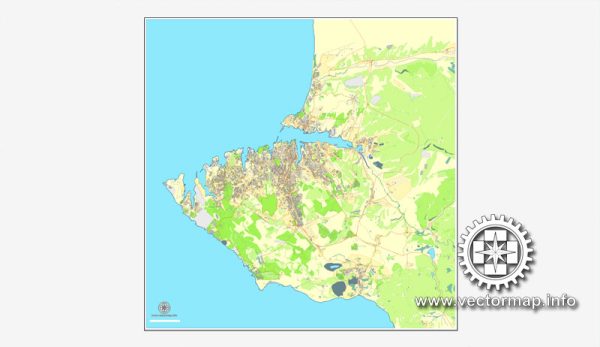Sevastopol, located on the Crimean Peninsula, has a rich history of urban development that spans several centuries. The city has been a significant strategic and cultural center, witnessing various rulers and civilizations. Here is a brief overview of the history of urban development in Sevastopol:
- Ancient Period:
- The site of Sevastopol has ancient roots, with evidence of Greek and Byzantine settlements dating back to antiquity.
- The Greeks established the colony of Chersonesus in the 6th century BCE, contributing to the region’s cultural and economic development.
- Medieval Period:
- The region experienced periods of Byzantine, Khazar, and Kievan Rus rule.
- Mongol invasions in the 13th century brought significant changes to the area.
- Ottoman Era:
- In the 15th century, the Crimean Khanate, a vassal state of the Ottoman Empire, controlled the region.
- The Ottoman Turks established a fortress called Akhtiar on the site of present-day Sevastopol.
- Russian Empire:
- The Russian Empire annexed Crimea in the late 18th century, and Catherine the Great founded the city of Sevastopol in 1783.
- Sevastopol became a vital naval base for the Black Sea Fleet, leading to the construction of fortifications and military infrastructure.
- Crimean War:
- Sevastopol gained international prominence during the Crimean War (1853-1856) when British, French, and Ottoman forces besieged the city.
- The war resulted in significant destruction, and the city’s development was hindered.
- Post-Crimean War Reconstruction:
- After the war, efforts were made to rebuild Sevastopol. The city’s strategic importance as a naval base was reaffirmed.
- Soviet Period:
- Sevastopol played a crucial role during World War II as a vital naval base for the Soviet Black Sea Fleet.
- The city underwent further development during the Soviet era, with the construction of residential areas, industrial facilities, and infrastructure.
- Post-Soviet Era:
- Following the dissolution of the Soviet Union in 1991, Sevastopol became part of independent Ukraine.
- The city has been a focal point of geopolitical tensions, especially after the annexation of Crimea by Russia in 2014.
- Modern Development:
- Sevastopol continues to be a strategically important city for the Russian Federation.
- Urban development efforts in recent years have included the improvement of infrastructure, renovation projects, and the preservation of historical sites.
Sevastopol’s history reflects the complex interplay of different cultures, rulers, and geopolitical events. The city’s strategic location and naval significance have shaped its development over the centuries.


 Author: Kirill Shrayber, Ph.D.
Author: Kirill Shrayber, Ph.D.